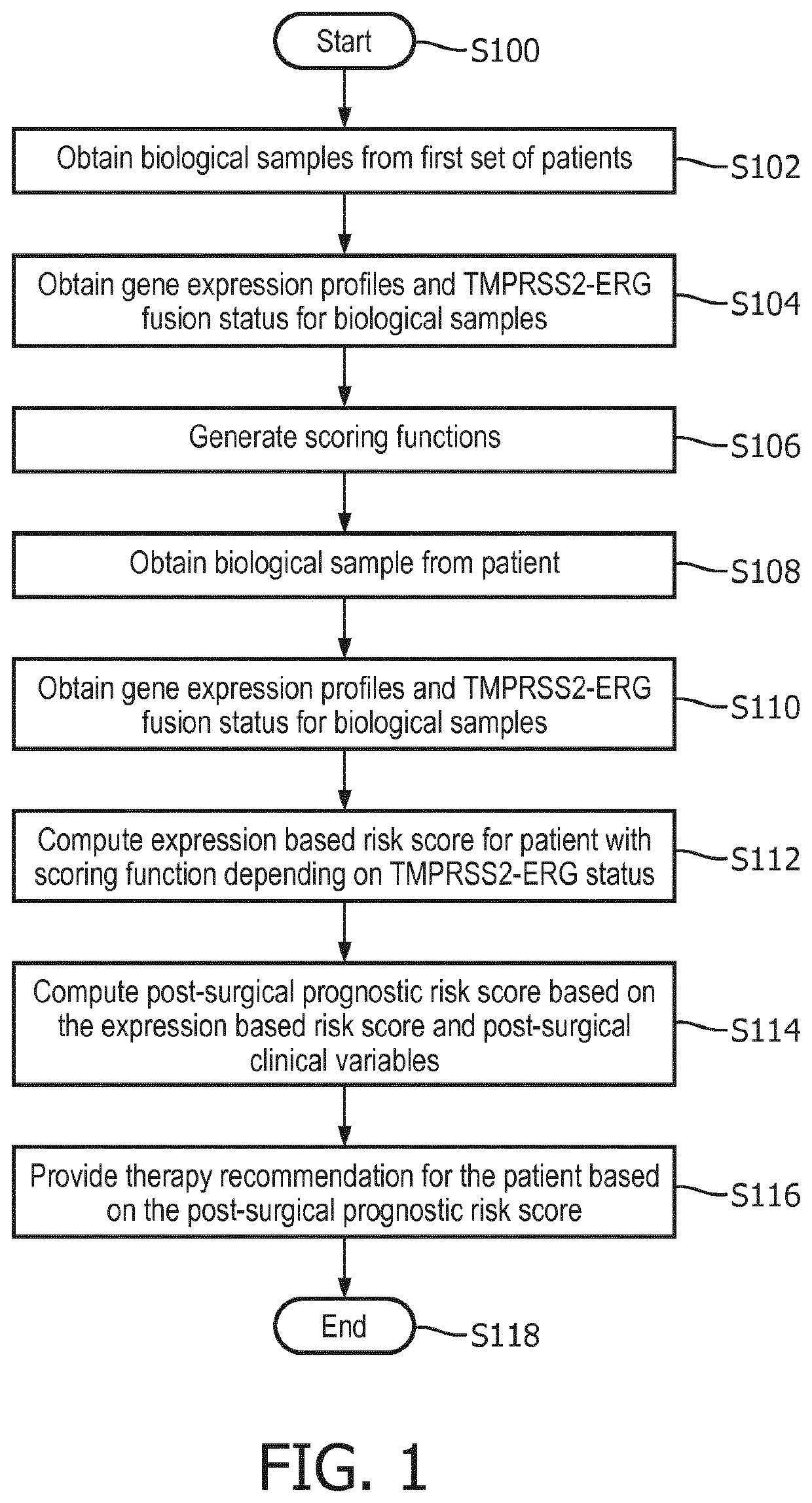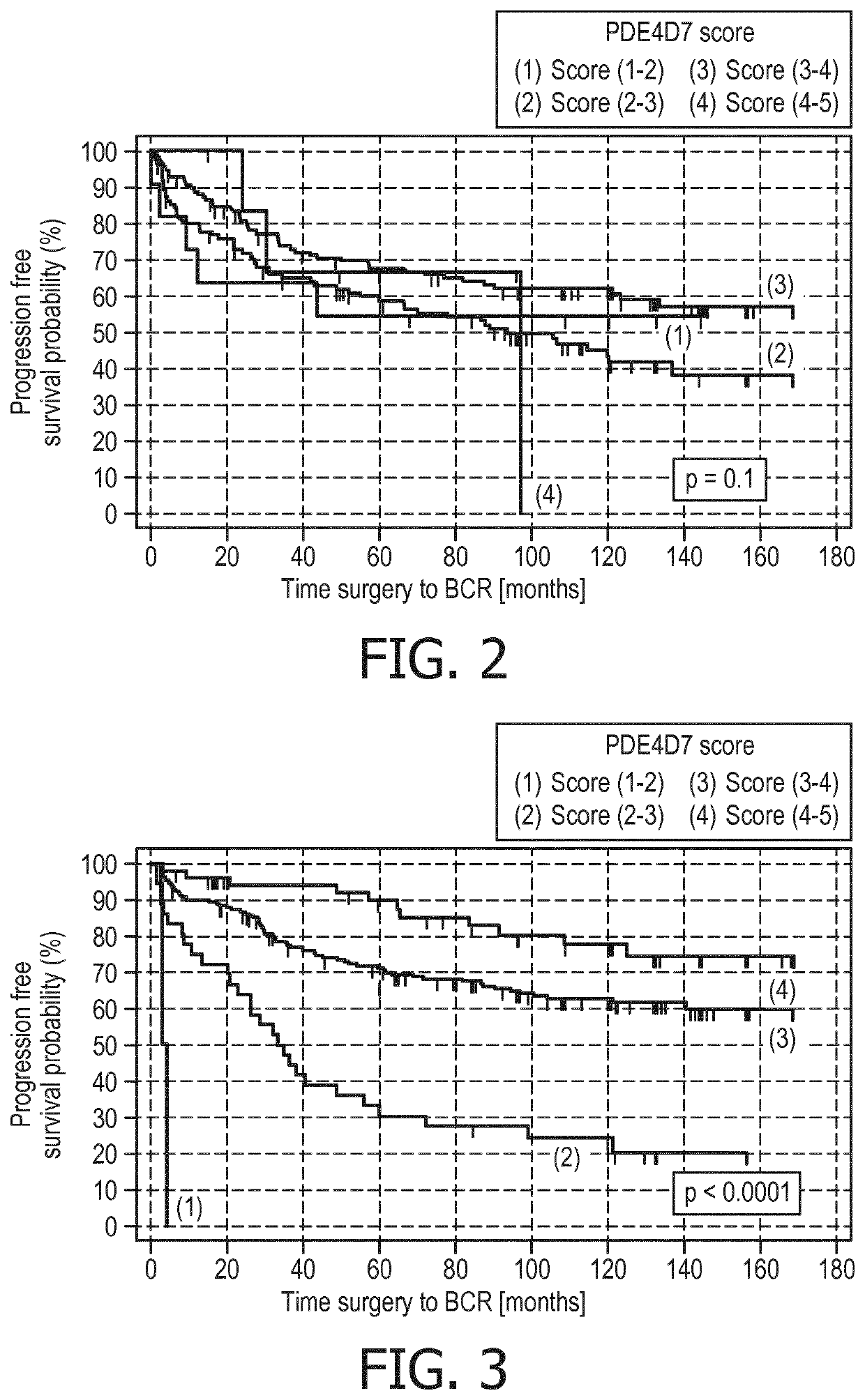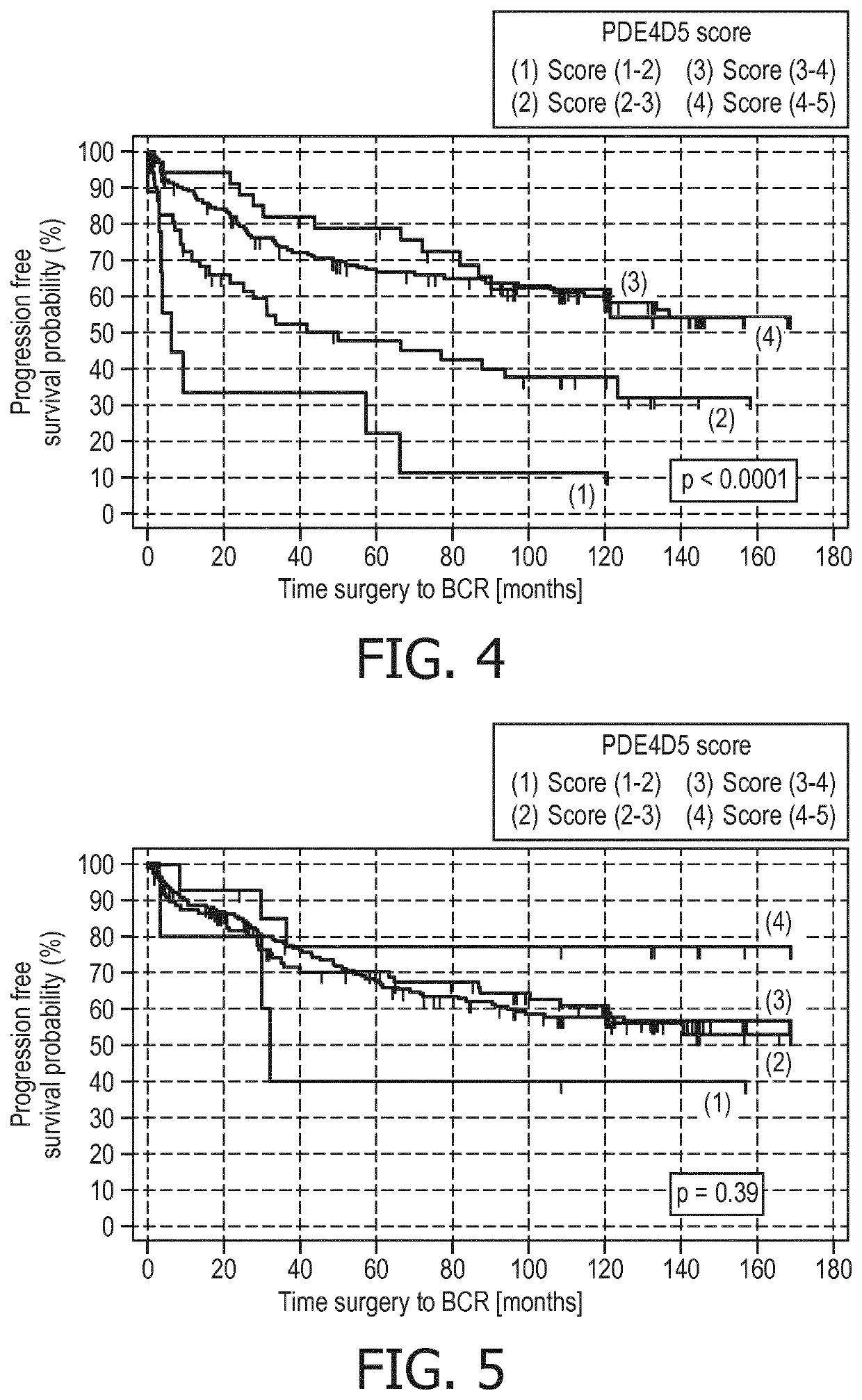Post-surgical risk stratification based on pde4d variant expression, selected according to tmprss2-erg fusion status, and post-surgical clinical variables
a prostate cancer and risk stratification technology, applied in the field of post-surgical risk stratification of prostate cancer subjects, to achieve the effect of reducing the risk of post-surgical disease progression, improving the stratification of the subject, and improving secondary treatment decisions
- Summary
- Abstract
- Description
- Claims
- Application Information
AI Technical Summary
Benefits of technology
Problems solved by technology
Method used
Image
Examples
examples
Patient Cohort and Samples
[0131]A radical prostatectomy (RP) patient cohort, with the demographics shown in TABLE 2, was employed. A small biopsy punch (approximately 1 millimeter by 2 millimeters) of tissue was collected of a representative tumor area from the resected prostate from 656 patients who had been consecutively operated on between 2000 and 2004 at a single high-volume clinical center in Germany. Of the 656 patients 600 were selected for RNA Next-Generation Sequencing based on RNA quality and concentration in the sample after nucleic acid extraction. After quality control of the RNAseq data 575 patient samples were found eligible for statistical analysis.
TABLE 2Demographics of the radical prostatectomy (RP) patient cohortSurgery:RP cohort2000-2004Parameter(#575)Demographics &Age (at RP)41.3-79.2(62.7)ClinicalPreoperative PSA0.18-120(7.1)RangePercent tumor in biopsy0.2-80(10.3)(median)Prostate Volume9-244(42)PSA density0.1-24(0.18)CAPRA-S Risk CategoryLow Risk (CAPRA-S 0-2...
PUM
| Property | Measurement | Unit |
|---|---|---|
| PSA | aaaaa | aaaaa |
| magnetic | aaaaa | aaaaa |
| concentration | aaaaa | aaaaa |
Abstract
Description
Claims
Application Information
 Login to View More
Login to View More - R&D
- Intellectual Property
- Life Sciences
- Materials
- Tech Scout
- Unparalleled Data Quality
- Higher Quality Content
- 60% Fewer Hallucinations
Browse by: Latest US Patents, China's latest patents, Technical Efficacy Thesaurus, Application Domain, Technology Topic, Popular Technical Reports.
© 2025 PatSnap. All rights reserved.Legal|Privacy policy|Modern Slavery Act Transparency Statement|Sitemap|About US| Contact US: help@patsnap.com



